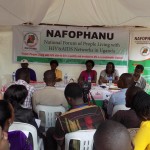We need to provide support to Civil Society Organizations to strengthen training for community members on the use of electronic data systems in conjunction with existing health electronic systems in the fight against HIV and AIDS.
Community Led Monitoring (CLM) is a novel approach to improving the quality of HIV and TB services by putting end users of these services (that is people living with HIV and at high risk of HIV in diversity) at the forefront of influencing service quality through their own lived experiences with utilisation of the HIV and TB services.
Community-led monitoring (CLM) is a technique initiated and implemented by local community-based organizations and other civil society groups, networks of key populations (KP), people living with HIV (PLHIV), and other affected groups, or other community entities that gather quantitative and qualitative data about HIV services. The CLM focus remains on getting input from recipients of HIV services in a routine and systematic manner that will translate into action and change.
The CLM approach that is currently being implemented in 80 districts to date, dates far back as 2012 at a time when Uganda was reporting an increasing HIV incidence. The HIV incidence and prevalence at the time of 7.0 % as per the UAC HIV indicator survey indicated that something was not right with the HIV response.
The integration of electronic data systems is crucial for improving the management and monitoring of HIV and AIDS programs. By equipping community members with the necessary skills to effectively utilize these systems, we can enhance the overall response to HIV and AIDS in a more coordinated and efficient manner.
CSOs play a vital role in bridging the gap between healthcare providers and the communities they serve. By focusing on training community members, CSOs can empower individuals to actively participate in monitoring their own health status, as well as accessing services and information related to HIV and AIDS prevention and treatment.
Providing training on electronic data systems will enable community members to contribute to the collection and analysis of data, leading to better decision-making and resource allocation. By understanding how to navigate these systems, community members can ensure the accurate capture and reporting of critical data, which in turn will support evidence-based interventions and improve the overall effectiveness of HIV and AIDS programs.
To ensure the success of this initiative, it is essential to provide comprehensive training programs that address the specific needs and challenges faced by community members. These programs should focus on building digital literacy skills, including data entry, data validation, and data interpretation. Additionally, ongoing technical support and mentorship should be provided to reinforce the learning and address any emerging issues or barriers that community members may encounter.
In conclusion, supporting CSOs in strengthening training for community members on the use of electronic data systems with existing health electronic systems can vastly improve the fight against HIV and AIDS. By empowering community members with the necessary skills, we can enhance data management, inform decision-making, and ultimately contribute to more effective HIV and AIDS prevention and treatment strategies.



